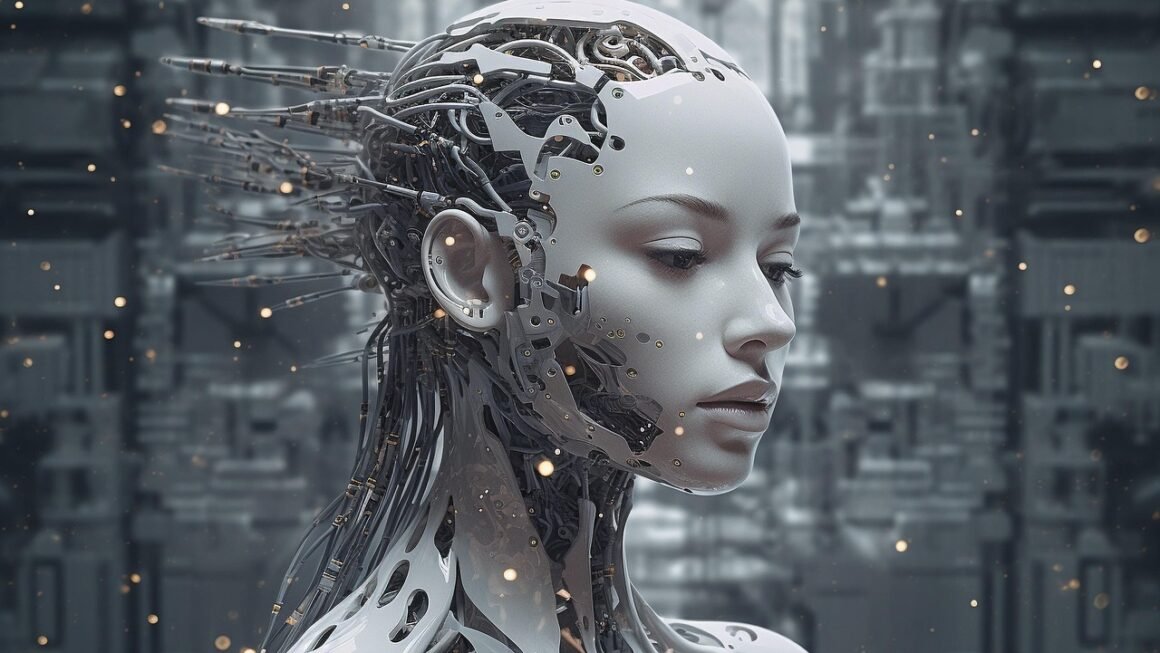Voice recognition technology, once relegated to the realm of science fiction, is now a ubiquitous part of our daily lives. From controlling smart home devices to dictating emails, voice recognition has transformed how we interact with technology. But what exactly is voice recognition, and how does it work? This blog post will delve into the intricacies of voice recognition technology, exploring its history, applications, and the future trends shaping its development.
What is Voice Recognition?
Defining Voice Recognition
Voice recognition, also known as speech recognition, is the ability of a machine or program to identify words and phrases in spoken language and convert them to a machine-readable format. This technology allows devices to understand and respond to human voice commands. It’s important to differentiate voice recognition from voice authentication (speaker recognition), which focuses on identifying who is speaking rather than what they are saying.
How Voice Recognition Works
The underlying process of voice recognition typically involves several key steps:
- Acoustic Modeling: Breaking down the audio into phonemes, the smallest units of sound in a language. This step uses pre-trained acoustic models that map audio features to phonemes.
- Language Modeling: Using statistical models to predict the sequence of words that are most likely to occur, based on grammar rules, context, and prior training data. This helps disambiguate similar-sounding words.
- Feature Extraction: Converting the audio signal into a set of features that can be analyzed. Common techniques include Mel-Frequency Cepstral Coefficients (MFCCs).
- Decoding: Combining acoustic and language models to determine the most likely sequence of words that matches the spoken input. This is the core of the recognition process.
- Text Output: Generating the text representation of the recognized speech.
Evolution of Voice Recognition
Voice recognition has come a long way since its early days.
- Early Stages: Early systems were limited to recognizing isolated words spoken by a specific speaker.
- Statistical Modeling: The introduction of Hidden Markov Models (HMMs) significantly improved accuracy and allowed for the recognition of continuous speech.
- Deep Learning Revolution: Deep learning, particularly recurrent neural networks (RNNs) and transformers, has revolutionized voice recognition, leading to significant gains in accuracy and robustness. This allows voice recognition systems to understand different accents, background noise, and speaker variations.
Key Components of Voice Recognition Systems
Microphones
The quality of the microphone plays a vital role in the accuracy of voice recognition.
- Types of Microphones: Various microphones exist, including dynamic, condenser, and MEMS microphones. Condenser microphones, particularly those integrated into devices like smartphones, often provide a good balance of sensitivity and noise rejection.
- Placement and Sensitivity: Proper placement of the microphone is crucial to minimize background noise and maximize signal clarity. High-sensitivity microphones are generally preferred, especially in noisy environments.
- Noise Cancellation: Advanced microphones incorporate noise cancellation technologies to filter out unwanted sounds, further improving the accuracy of speech recognition.
Software and Algorithms
Software and algorithms are the brain of the voice recognition system.
- Automatic Speech Recognition (ASR) Engines: These are the core components that perform the speech-to-text conversion. Examples include Google Cloud Speech-to-Text, Amazon Transcribe, and Microsoft Azure Speech Services.
- Natural Language Processing (NLP): NLP techniques are often used in conjunction with voice recognition to understand the meaning behind the spoken words. This allows for more sophisticated interactions, such as intent recognition and dialogue management.
- Machine Learning Models: Machine learning, particularly deep learning, is central to modern voice recognition systems. Models are trained on massive datasets of speech to learn patterns and improve accuracy.
Hardware Considerations
Hardware considerations impact the performance and efficiency of voice recognition.
- Processing Power: Voice recognition can be computationally intensive, requiring powerful processors to perform real-time analysis.
- Memory: Sufficient memory is needed to store the acoustic and language models, as well as to process the incoming audio data.
- Power Consumption: For mobile devices, power consumption is a critical factor. Efficient algorithms and hardware are needed to minimize battery drain.
Applications of Voice Recognition
Smart Assistants
One of the most visible applications of voice recognition is in smart assistants like:
- Amazon Alexa: Used to control smart home devices, play music, set alarms, and provide information.
- Google Assistant: Integrated into Android devices, smart speakers, and other platforms. Can answer questions, make calls, and control smart devices.
- Apple Siri: Available on iPhones, iPads, and Macs. Used for a variety of tasks, including sending messages, setting reminders, and controlling music.
These assistants rely heavily on accurate voice recognition to understand user commands.
Healthcare
Voice recognition is transforming healthcare in various ways:
- Medical Transcription: Doctors can use voice recognition to dictate patient notes, saving time and reducing errors compared to manual transcription.
- Remote Patient Monitoring: Voice-enabled devices can be used to monitor patients remotely, allowing for early detection of health problems.
- Accessibility: Voice recognition can help patients with disabilities communicate more easily.
Automotive Industry
Voice recognition is increasingly integrated into vehicles:
- Hands-Free Calling: Allows drivers to make and receive calls without taking their hands off the wheel.
- Navigation: Drivers can use voice commands to set destinations and get directions.
- Infotainment Control: Voice recognition can be used to control music, climate control, and other vehicle features.
Business and Productivity
Voice recognition tools enhance productivity in various business settings:
- Dictation Software: Programs like Dragon NaturallySpeaking allow users to dictate documents and emails, increasing writing speed and reducing typing fatigue.
- Meeting Transcription: Voice recognition can be used to automatically transcribe meetings, providing accurate records for future reference.
- Customer Service: Voice-enabled chatbots and virtual assistants can handle customer inquiries, freeing up human agents to focus on more complex issues.
Challenges and Limitations
Accuracy and Reliability
While voice recognition technology has improved dramatically, it still faces challenges in achieving perfect accuracy.
- Background Noise: Noisy environments can significantly degrade the performance of voice recognition systems.
- Accents and Dialects: Different accents and dialects can pose challenges for voice recognition, especially if the system has not been trained on a diverse dataset.
- Homophones: Words that sound alike but have different meanings (e.g., “there,” “their,” and “they’re”) can be difficult to distinguish.
Privacy Concerns
The use of voice recognition raises important privacy concerns.
- Data Storage: Voice recordings are often stored and analyzed by voice recognition providers.
- Data Security: Secure storage and transmission of voice data are essential to protect user privacy.
- User Consent: Clear and transparent user consent policies are needed to ensure that users are aware of how their voice data is being used.
Ethical Considerations
Ethical considerations are becoming increasingly important as voice recognition technology becomes more pervasive.
- Bias: Machine learning models can inherit biases from the data they are trained on, leading to unfair or discriminatory outcomes.
- Accessibility: Ensuring that voice recognition technology is accessible to people with disabilities is crucial.
- Transparency: Users should be able to understand how voice recognition systems work and how their data is being used.
Future Trends in Voice Recognition
Edge Computing
- Moving voice processing from the cloud to local devices. Edge computing offers several advantages:
- Reduced Latency: Processing voice data locally eliminates the need to send it to the cloud, resulting in faster response times.
- Improved Privacy: Keeping voice data on-device reduces the risk of data breaches and privacy violations.
- Offline Functionality: Edge-based voice recognition can work even without an internet connection.
Multilingual Support
- Expanding the range of languages supported by voice recognition systems.
- Global Accessibility: Supporting more languages makes voice recognition technology accessible to a wider audience.
- Cross-Lingual Communication: Voice recognition can be used to facilitate real-time translation between different languages.
- Improved Accuracy: As more data becomes available for different languages, the accuracy of voice recognition systems will continue to improve.
Emotion Recognition
- Detecting emotions from speech patterns.* This technology has potential applications in:
- Customer Service: Identifying frustrated or angry customers and routing them to specialized agents.
- Healthcare: Monitoring patients’ emotional state and detecting signs of depression or anxiety.
- Education: Assessing students’ understanding and engagement in online learning environments.
Conclusion
Voice recognition technology has revolutionized how we interact with machines, becoming an integral part of our daily lives. From smart assistants to healthcare applications, its impact is undeniable and continues to grow. Despite facing challenges such as accuracy limitations, privacy concerns, and ethical considerations, advancements in edge computing, multilingual support, and emotion recognition promise an exciting future for this ever-evolving technology. The key takeaways are the constant innovation in accuracy and the importance of mindful ethical considerations when designing voice-enabled applications. As voice recognition becomes more sophisticated, it will undoubtedly shape the future of human-computer interaction, creating more intuitive and accessible ways to engage with technology.



